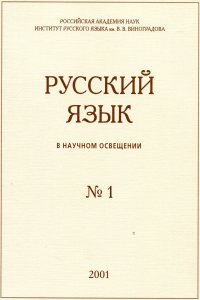The history of prepositions of conformity in Russian
Abstract:
The evolution of functional styles in Russian during the past three hundred years was followed by a significant restructuring of the relationships between the logical and conceptual elements of the text. Prepositions of conformity constitute an essential lexical and syntactic component of formal and scientific styles formed during the eighteenth and nineteenth centuries. They developed in two ways: firstly, on the basis of Russian lexis, by means of morphological transformations, especially the transformation of notional words into grammatical words through the development of semantics of relativity in adverbials with final -o; and secondly, by way of calquing, primarily from French and German (v sootvetstvii s, soobrazno, skhodstvenno, v skhodstvennost). The variability and competition of prepositions that convey conformity, which was typical for formal registers in the eighteenth and nineteenth centuries, is still present in the modern language, including some relict features, and this causes fluctuations in usage (e.g., between the Dative and the Genitive with the preposition soglasno), which provoke orthological recommendations.


